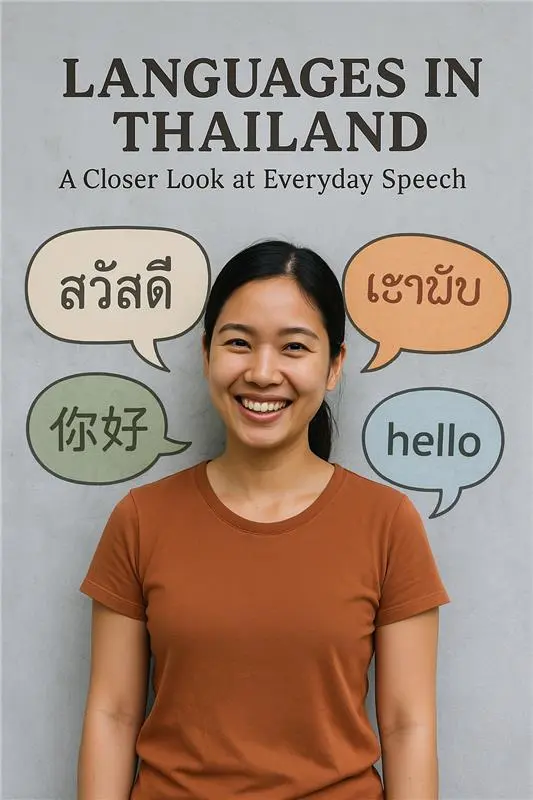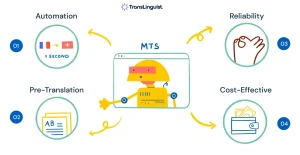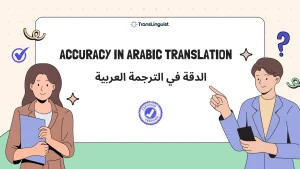If you spend time in Thailand—especially beyond tourist hubs—you’ll quickly notice how the languages of Thailand shift like landscapes. In one town, speech flows in soft, melodic tones; a few hours away, dialects transform entirely. This diversity reflects the rich tapestry of the languages of Thailand, from Central Thai to regional variants like Isan and Lanna, each carrying its own history and cultural heartbeat.
A lot of households don’t stick to just one language either. People slip between languages without even realizing they’re doing it. It’s just part of how things are. The way folks speak here isn’t only about getting a message across, it’s wrapped up in who they are, where they come from, and how they live day to day.
Thai And Then Some
Central Thai is the standard version; it’s what you’ll hear on the news, in classrooms, or at government offices. Pretty much anywhere formal.
But here’s where it gets interesting: over 70 languages are spoken across Thailand. That includes regional dialects, Indigenous languages, and those brought in by immigrants over generations.
Some of the more common ones are:
- Central Thai: The one most people learn if they’re studying Thai.
- Isan (Northeastern Thai): Spoken in the northeast; it’s very similar to Lao.
- Chinese dialects: Like Teochew, Hokkien, and Mandarin, especially in Thai-Chinese communities.
And honestly, that’s just scratching the surface.
Thai Isn’t Just a Language — It’s a Culture
Thai has a rhythm to it. It is polite, expressive, and packed with cultural nuance. You’ll hear things like kráp (ครับ) or kâ (ค่ะ) at the end of sentences these change depending on who’s talking, and who they’re talking to.
It’s also tonal which means how you say something changes what it means. One tone off and you might be saying “dog” when you meant “high.” It’s a challenge for sure, but it also gives the language a certain music.
Dialects With Deep Roots
Standard Thai might unite the country, but regional dialects are what people grow up with. They give each part of Thailand its own flavor.
Some major ones include:
- Isan: About 20 million people speak it, mostly in the northeast. It’s so close to Lao, some people don’t really draw a line between them.
- Kam Mueang (Northern Thai): Used in the north, like in Chiang Mai. It’s soft and has a sing-song feel.
- Southern Thai (Pak Tai): Common in southern provinces like Krabi or Surat Thani. It’s quick, with some Malay influence.
Indigenous Languages: Voices That Don’t Always Make It to Paper
There are communities in Thailand, such as the Karen, Hmong, Lahu, and Akha, where people speak their own native languages. You’ll mostly find them in the hills up near the Myanmar border. These aren’t languages you’ll usually see written down. They’re passed along by speaking with older folks, telling stories, singing songs, or just chatting with their kids. It’s everyday stuff, nothing formal, but it’s how their history and way of life stay alive.
But these languages aren’t just about words. They hold a lot, not just words, but ways of thinking, old beliefs, bits of knowledge that you don’t really find in books. The tough part is, a lot of that is getting lost. Younger people are moving to the cities, going to schools where only Thai is used, and slowly, the old languages start to slip away.
And when a language fades, it’s more than just speech we lose; it’s a whole piece of culture, a way of thinking, gone with it.
Languages That Came With Migration
Thailand’s language landscape has also been shaped by movement. Over the years, different communities have added their voices to the mix.
You’ll hear:
- Chinese dialects in parts of Bangkok.
- Burmese in towns near the western border.
- Malay in the far south.
- English, thanks to tourism and business.
- And languages like Japanese, Korean, Hindi, and more are found in pockets of expat life.
Walk through certain neighborhoods in Bangkok, and you might hear five languages before you finish your coffee.
What About Schools?
Most schools teach in Central Thai. English is taught early on, especially in cities or private schools, but how well it sticks really depends on the school and the student.
Some regions now offer bilingual programs, helping kids learn both Thai and their home language. There’s also a growing movement to keep local languages alive through radio, festivals, or just community pride.
Why It All Matters
Language is more than just words. It’s memory, emotion, and identity. In Thailand, every dialect and borrowed phrase adds something special.
It might be a grandma singing in Isan, a vendor joking in a Thai-English mix, or a Karen elder telling stories by the fire. These voices make up the real soul of the country.
Every Voice Counts
Thailand isn’t just one voice; it’s many, layered, and alive. Central Thai might be the national language, but the beauty is in the mix.
At TransLinguist, we believe language connects people. Whether you’re exploring, teaching, or doing business, we’re here to help you speak clearly, confidently and with heart.
FAQs
What language is closer to Thai?
Lao is the language closest to Thai—both share similar vocabulary, grammar, and tones, making them largely mutually intelligible, especially in spoken form.
Which language is commonly spoken in Thailand?
The most commonly spoken language in Thailand is Thai (specifically Central Thai), which is also the official language used in government, education, and media.
What makes Thai language unique?
The Thai language is unique for its tonal system (five tones that change word meaning), distinct script with no spaces between words, and deep roots in Sanskrit and Pali, giving it a rich cultural and spiritual flavor.
Is English common in Thailand?
English is fairly common in Thailand’s tourist areas, major cities, and business settings, but it’s not widely spoken in rural regions or among older generations.
Why is Thai called Thai?
Thai is called “Thai” because it means “free” in the Thai language—reflecting the identity of the Thai people as a free nation. The name also distinguishes the language from others spoken in the region, like Lao.



